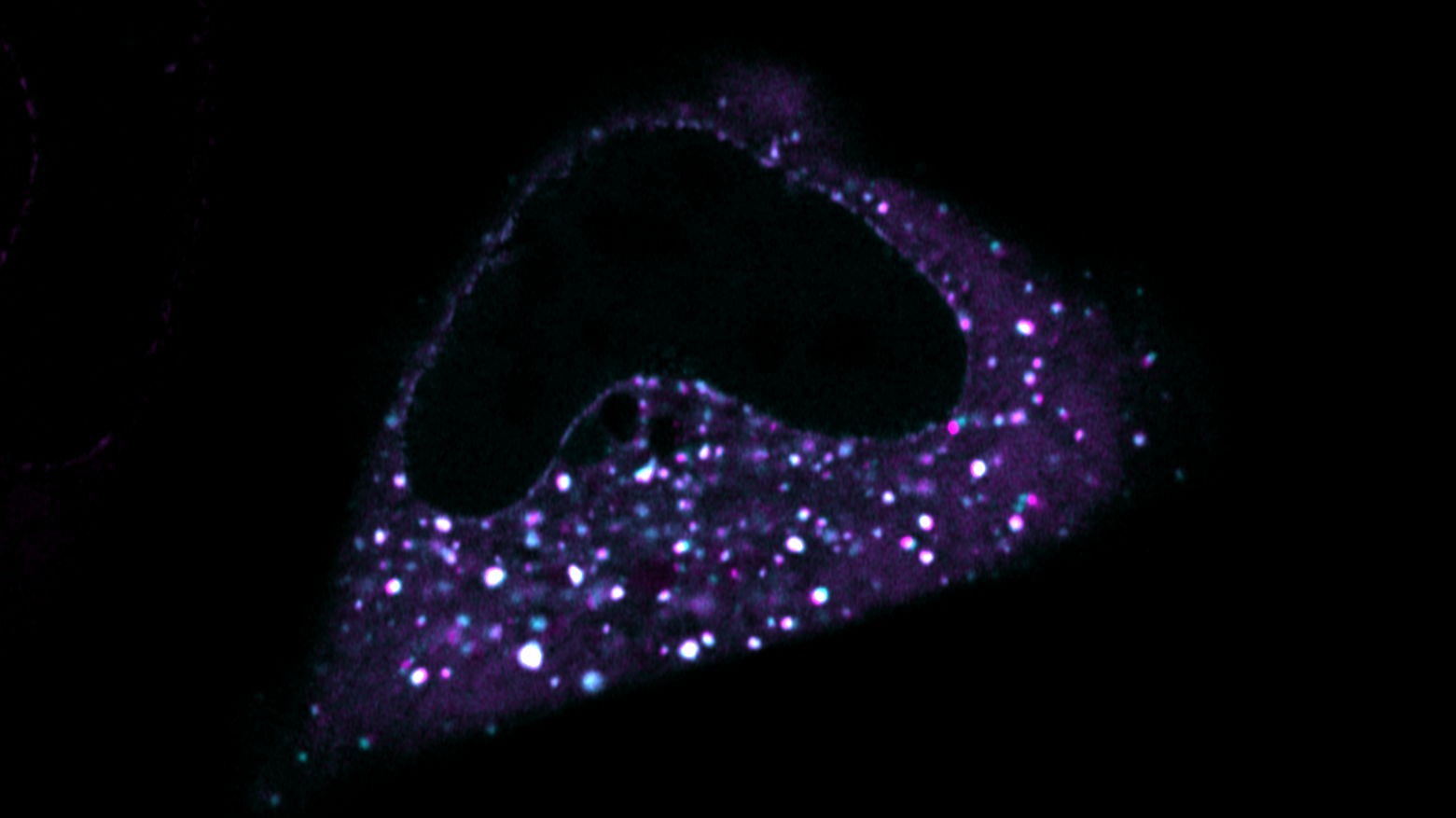Scientists discover viral trapdoor blocking HIV and herpes
Ghent, 10 October 2024 – A group of researchers led by Xavier Saelens and Sven Eyckerman at the VIB-UGent Center for Medical Biotechnology discovered how a protein linked to the human immune system wards off HIV-1 and herpes simplex virus-1 by assembling structures in the cell that lure in these viruses and then trap them or even take them apart. The research was spearheaded by first author George Moschonas, published in Cell Host and Microbe, and could be used to devise new strategies to combat these viruses.
The innate immune system of the human body can sense and respond to viruses by producing alarm cytokines, most notably interferons. These proteins act as an alarm system that goes off when a cell is infected by a virus, warning surrounding cells of an invasion and prompting them to activate their antiviral defenses. These defenses comprise so-called interferon-stimulated genes (ISGs), which produce specific proteins with antiviral qualities. One example of this is the MX protein, which was discovered 60 years ago and restricts a broad range of viruses, including those that cause AIDS and herpes.
To date, researchers were unsure how the antiviral properties of the MX protein worked. However, in this new study led by Xavier Saelens and Sven Eyckerman of the VIB-UGent Center for Medical Biotechnology and in collaboration with Beate Sodeik (Hannover Medical School), Zeger Debyser (KU Leuven), Linos Vanderkerckhove (UGent) and Nico Callewaert (VIB-UGent), the secret of the MX protein’s antiviral activity was uncovered.
A virus decoy
A herpes or HIV virus delivers its genome in the host cell nucleus through the nuclear pore complex. This delivery is essential for the virus to launch its genetic program, hijack the cell’s machinery and propagate. As a result, new viruses are made, that leave the cell and spread to surrounding cells.
In an illuminating discovery, the researchers show how the MX protein drives the assembly of virus decoy structures that mimic nuclear pore complexes.
Sven Eyckerman: “We noticed that incoming viruses were being lured into structures that resembled nuclear pores. Through proteomics screens, we found that the MX protein interacts with proteins that are part of the nuclear pore complex. On closer inspection, we discovered that the MX protein orchestrates the assembly of nucleoporins into biomolecular condensates, membrane-less droplets inside a cell that act like a separate compartment. Viruses mistake these condensates for the actual cell door to the cell nucleus and get trapped or punctured.”

Xavier Saelens: “By tricking viruses into prematurely releasing their genetic material, the MX protein ultimately prevents the spread of viral infections. This discovery not only clarifies how MX proteins combat viruses but also opens up potential new avenues for antiviral therapies.”
—
Moschonas et al. MX2 forms nucleoporin-comprising cytoplasmic biomolecular condensates that lure viral capsids
DOI: 10.1016/j.chom.2024.09.002
The research described in this study was made possible thanks to financial support from FWO, the German Research Council and ERC.
—
Joran Lauwers
About the VIB-UGent Center for Medical Biotechnology
Research at the VIB-UGent Center for Medical Biotechnology can lead to more effective medicine. If we know the causes and mechanisms of a disease, we can then deal with it in a better way. This is much more efficient than treating the symptoms, which is how things are often done at the moment. The research helps to prevent, diagnose or treat diseases.



